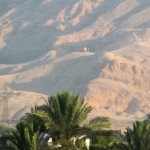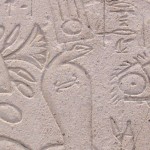
Meretseger: She Who Loves Silence. The Cobra Deity at Deir el-Medina
In the Western world the cobra rarely inspires sentiments of benevolence, warmth or good intentions. It is not a cuddly beast. Matters were more ambivalent in ancient Egypt where a range of wild animals were identified with deities imbued with admired values of physical strength, protection and courage, as well as less obviously admirable qualities like aggression, retribution, vengeance and retaliation. Like Sobek, the crocodile deity, and Sekhmet the lioness, the cobra deities comprised a mixture of attributes that centred on their fierce ability to defend themselves and to strike, hissing and spitting poison, to annihilate their aggressors. [more…]
Edition - March, 2014
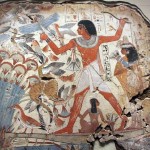
The paintings from the lost tomb-chapel of Nebamun
The paintings from the tomb of Nebamun are justifiably famous for their beauty and incredible dynamism. The British Museum purchased the panels that it has in 1821 . They were located by a Greek tomb robber named Giovanni d’Athanasi, who worked as an agent for Henry Salt in Luxor. Unfortunately d’Athanasi was angered by the finder’s fee offered and he refused to give up the location of the tomb from where the panels had been removed. The location of the chapel remains unknown to this day. [more…]

Book Review: Grand Hotels of Egypt in the Golden Age of Travel
Grand Hotels of Egypt is essentially a book about the influx of western visitors into Egypt after Napoleon had departed and Anglo-American style infrastructure had arrived in the nineteenth and early twentieth centuries. Using contemporary accounts and photographs, cartoons and some remarkable marketing material in full colour, Andrew Humphreys explores the role of the grand hotels of the day in the constant swirl of people as they experienced Egypt’s towns and cities. [more…]
Edition - June, 2012
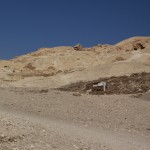
The Mystery of Psusenes III
John Gardner Wilkinson published his ‘Materia Hieroglyphica’ in Malta in 1828, having spent the previous year in Luxor recording inscriptions in the Nobles’ Tombs. The most important aspect of this volume is the inclusion of records from the Theban Tomb TTA18 which early Egyptologists used to identify pharaoh Psusenes III. As TTA18 contains the only mention of Psusenes III, some scholars are starting to doubt if this identification of an otherwise unattested pharaoh was at all correct. Others probed into the possibility that Psusenes III is the same person as Psusenes II. Yet others see Psusenes III as High Priest of Amen only. [more…]
Edition - April, 2012
Book Review: Guide to the Valley of the Kings by Alberto Siliotti
By Kate Phizackerley, Published on Egyptological, Magazine Reviews, Edition 5, April 3rd 2012. Guide to the Valley of the Kings Author: Alberto Siliotti First published: Weidenfeld and Nicholson, London, 1996 (USA, Barnes and Noble 1997) Edition reviewed: 4th Edition (1999) ISBN-10: 076070483X ISBN-13: 978-0760704837 168 pages (hardcover) Introduction There are glossy coffee table picture books […] [more…]
Edition - March, 2012
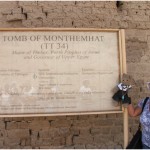
Lecture Overview: ‘Massive, Complex, Beautiful, Hidden’ by Chris Naunton
With fellow member of Sussex Egyptology Society, Amena, we made it to Chris Naunton’s talk to the Sussex Archaeology Society at the University of Sussex in Brighton on 15th March 2012 . Once inside the venue, we found a superb lecture theatre with a welcoming and enthusiastic audience. Chris called his illustrated talk Massive, Complex, Beautiful, Hidden. His title described TT37, the Tomb of Harwa at South Asasif, Western Thebes where Chris has been involved over 4 seasons. [more…]
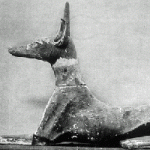
Introduction to the Contents of Tomb KV57 (Horemheb)
KV57, Horemheb’s royal tomb in the Valley of the Kings is famous for its bright decoration but it has yielded a large number of artefacts. The tomb has been excavated twice by Theodore Davis after he discovered the tomb in 1908 and a century later by Geoffrey Martin. This paper brings together findings of both excavations to show that the tomb originall contained an assemblage matching or surpassing that found in KV62, the tomb of Tutankhamun [more…]
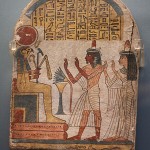
A Context for Nehmes-Bastet (KV64): A Birds Eye View of the Early Third Intermediate Period – Part 1
In January 2012, thanks to the discovery of a new tomb in the Valley of the Kings, named KV64, the 22nd Dynasty was catapulted into the spotlight. At the moment, apart from a couple of tantalising photographs and a video released by the University of Basel (Switzerland) all we know is that the mummified woman was called Nehmes-Bastet; she was a chantress; and her father was a priest at the Temple of Karnak [more…]
 By
By 